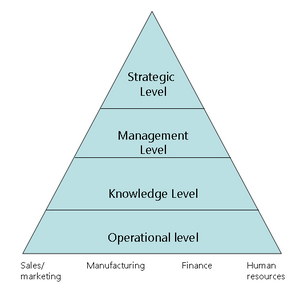Difference between revisions of "Systems and Organizations"
Jump to navigation
Jump to search
| Line 1: | Line 1: | ||
= Organisation = | = Organisation = | ||
[[Image:Information_flow.png|thumb|300px|right|Flow of information]] | |||
===Definition=== | ===Definition=== | ||
# Lewis H Haney: is a harmoneous adjustments of specialised parts for the accomplishment of common purpose | # Lewis H Haney: is a harmoneous adjustments of specialised parts for the accomplishment of common purpose | ||
| Line 12: | Line 13: | ||
** Eg: Situational leadership, Playing chess during lunch hours | ** Eg: Situational leadership, Playing chess during lunch hours | ||
===Benefits=== | ===Benefits=== | ||
# vision | # vision | ||
# planning | # planning | ||
Revision as of 22:09, 9 January 2010
Organisation
Definition
- Lewis H Haney: is a harmoneous adjustments of specialised parts for the accomplishment of common purpose
- Louis A Allen: process of identifying and grouping the work to be performed, defining and delegating the responsibility, establishing the relationship for the purpose of enabling the people to work most effectively together to accomplish the objectives
- Grouping of activities and resources in a logical fasion
Types
- Formal
- Structure of roles are formally organised
- Most effective in decision making, use of resources, focussed
- Informal
- Organisation that helps to accomplish the objectives in a indirect way
- Eg: Situational leadership, Playing chess during lunch hours
Benefits
- vision
- planning
- communication
- logical flow of work activities
- avoid conflict
- effective decision making
- Relationship
- focus
